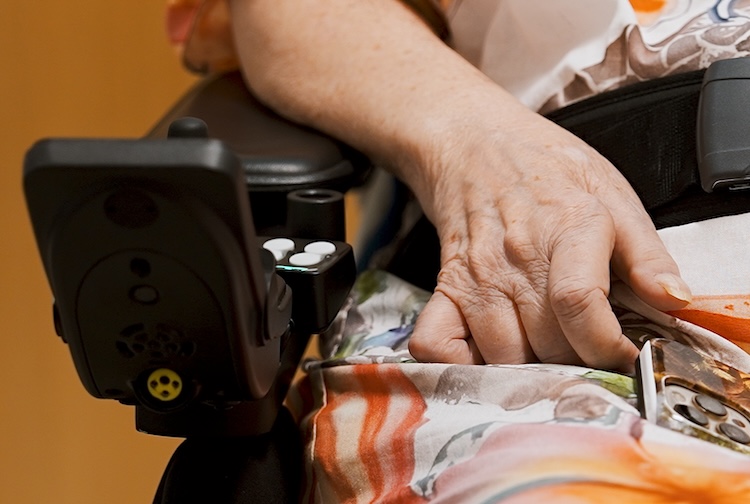How do you treat normal pressure hydrocephalus (NPH)?
An expert from one of the longest-running NPH clinics in the United States shares the signs, symptoms and treatment options for the uncommon condition.
May 23, 2025 John Reavey-Cantwell, M.D., is a VCU Health neurosurgeon involved in a clinical trial evaluating the use of a new device to treat normal pressure hydrocephalus (NPH). (Enterprise Marketing and Communications)
John Reavey-Cantwell, M.D., is a VCU Health neurosurgeon involved in a clinical trial evaluating the use of a new device to treat normal pressure hydrocephalus (NPH). (Enterprise Marketing and Communications)
By Sara McCloskey
After being diagnosed with normal pressure hydrocephalus (NPH), singer Billy Joel is canceling his upcoming tour of 17 packed stadium shows in North America and England.
In a statement posted on social media, Joel’s team said that the “condition has been exacerbated by recent concert performances, leading to problems with hearing, vision, and balance” and that the 76-year-old will be “undergoing specific physical therapy.”
The rare brain condition is often difficult to identify because it is mistaken for other illnesses affecting older adults. NPH develops in approximately 700,000 adults over the age of 60, however, only 20% of people with the disease are properly diagnosed.
“When patients develop NPH, their first symptom can be very distressing — difficulty walking due to a sensation that the feet are magnetically stuck to the floor,” said John Reavey-Cantwell, M.D., a VCU Health neurosurgeon who wrote about treating NPH patients in an op-ed for MedJournal360. “There is good news for patients: symptoms are largely reversible with treatment, especially if administered early in the course of the disease.”
VCU Health operates one of the longest-running NPH clinics in the country, and clinician-researchers here are shaping the current global standard of care. In fact, the first clinical guidelines for the diagnosis and treatment of NPH were developed with the help of VCU Health providers.
We spoke with Reavey-Cantwell about NPH and what treatment options are available for patients who are diagnosed with it.
What is normal pressure hydrocephalus (NPH)?
Your brain and spinal cord are protected and cushioned by cerebrospinal fluid (CSF). This extra fluid naturally drains or is absorbed by veins in the brain. NPH happens when extra fluid builds up, causing excessive pressure on the brain.
NPH typically affects people in their 60s or 70s and is often mistaken for the normal aging process, Alzheimer's or Parkinson's disease, however, it can be very effectively treated once properly diagnosed.
What are the signs and symptoms of NPH?
The three primary symptoms of the disease are:
- Trouble walking or with balance
- Bladder problems or urinary incontinence
- Cognitive changes such as memory loss or confusion
These symptoms get worse and can become more severe if there are delays in treatment.
How do you get diagnosed with NPH?
At VCU Health, we have a team of specialists that will perform a comprehensive evaluation to help figure out what is going on. We don’t just have neurologists and neurosurgeons on staff. We work with speech therapists, physical therapists, occupational therapists and urologists to give you care that’s personalized to your needs.
First, we will assess any problems you have with walking and balance and then go through the other symptoms you might be experiencing, like cognitive changes or urinary incontinence.
If we suspect you have NPH, we will perform a spinal tap to remove a large amount of fluid from your spine to see if it helps with your symptoms.
How is NPH typically treated?
NPH can be effectively treated with surgery, though the procedure is invasive and carries certain risks. The standard treatment we have used for decades involves implanting a ventricular peritoneal (VP) shunt into the ventricle of the brain. Surgeons will drill a hole in the patient's skull to insert the shunt and place a permanent drain that runs from the shunt to the abdomen.
There is always a risk of complications when you drill into the skull. Since most NPH patients are older in age, the surgery can become more complicated because of other medical conditions they might have, such as heart disease.
Is VCU Health studying new ways to treat NPH?
VCU Health's neurosurgical team is involved in a clinical trial for a new device that could speed up recovery time and reduce complications, compared to the traditional VP Shunt method.
The CereVasc® eShunt® Implant, eShunt Implant for short, is designed to improve the procedure for draining CSF fluid buildup in patients. It’s implanted by making a tiny incision in a vein in the leg, allowing the excess fluid from the neck to be absorbed by the body.
VCU Health is one of 12 clinics nationwide participating in this clinical trial. It's also the only participating site based in the mid-Atlantic region of the East Coast.




